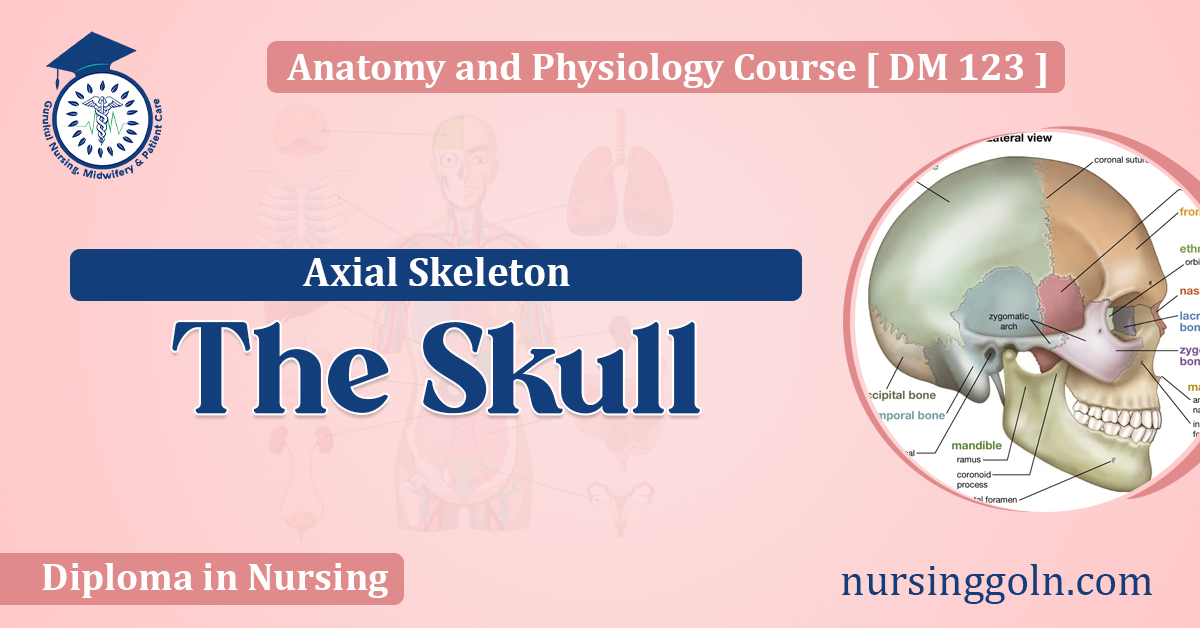The human skeleton is a marvel of evolutionary engineering, providing structure, protection, and facilitation of movement. One of its most intricate components, the skull, not only houses the brain but also supports the structures of the face and provides anchoring for the muscles that control speech, facial expression, and mastication. Part of the axial skeleton—which also includes the vertebral column, the rib cage, and the hyoid bone—the skull is a complex assembly of bones that have evolved to meet the demands of human life.
The Skull: A Central Player in the Axial Skeleton
1. The Basics of the Skull
The skull can be divided into two main parts: the cranium, which encases the brain, and the facial bones.
1.1 Cranium
The cranium consists of eight bones:
- Frontal Bone: This bone forms the forehead and the roof of the eye sockets (or orbits).
- Parietal Bones (2): These are located on either side of the skull just behind the frontal bone.
- Temporal Bones (2): These are found at the sides and base of the skull and contain the structures of the inner and middle ear.
- Occipital Bone: Located at the back of the head, this bone has a large hole, the foramen magnum, through which the spinal cord exits the skull.
- Sphenoid Bone: This butterfly-shaped bone spans the width of the skull and forms the base of the eye sockets.
- Ethmoid Bone: Located between the eyes, this bone forms the roof of the nasal cavity and the floor of the anterior cranial fossa.
1.2 Facial Bones
There are 14 facial bones:
- Mandible: The lower jaw and the only movable bone of the skull.
- Maxillae (2): The upper jaw and central portion of the face.
- Palatine Bones (2): These bones form the rear part of the roof of the mouth.
- Zygomatic Bones (2): The cheekbones.
- Lacrimal Bones (2): These tiny bones are located at the inner corner of each eye.
- Nasal Bones (2): These form the bridge of the nose.
- Vomer: This thin bone forms the lower part of the nasal septum.
- Inferior Nasal Conchae (2): These are found inside the nasal cavity.
2. The Unique Features and Openings
Several unique features and openings are scattered across the skull to allow passage of nerves, vessels, and other structures:
- Foramen Magnum: A large hole at the base of the skull where the spinal cord exits and connects to the brain.
- Temporal Fossa: A depression on the side of the skull where the temporalis muscle (important for chewing) attaches.
- External Acoustic Meatus: The opening leading to the inner parts of the ear.
- Mastoid Process: A bony projection behind the ear where neck muscles attach.
3. Joints of the Skull
There are two types of joints in the skull: sutures and the temporomandibular joint.
3.1 Sutures
These are immovable joints that connect most of the bones of the skull. The major sutures include:
- Coronal Suture: Between the frontal and parietal bones.
- Sagittal Suture: Between the two parietal bones.
- Lambdoid Suture: Between the parietal and occipital bones.
- Squamosal Suture: Between the parietal and temporal bones.
3.2 Temporomandibular Joint (TMJ)
This is the joint between the temporal bone and the mandible. It allows for the opening, closing, and sideways movement of the mouth.
4. The Skull and Evolution
The human skull has undergone significant evolutionary changes. Early human ancestors had a more protruding face, larger teeth, and a smaller braincase. Over time, as dietary habits and cognitive functions evolved, there was a reduction in jaw size, a more vertical forehead, and an expansion of the cranial capacity. These changes facilitated the growth of the brain and the development of complex cognitive functions.
5. Clinical Considerations
Given its importance, any damage to the skull can have serious implications:
- Skull Fractures: These can occur due to traumatic injuries. Depending on the location and extent, they can lead to brain injuries, infections, or other complications.
- Craniosynostosis: A congenital condition where the sutures of a baby’s skull fuse prematurely. This can affect brain growth and shape of the head.
- Temporomandibular Disorders (TMD): A range of conditions affecting the TMJ and the muscles involved in jaw movement.
The skull is more than just a protective casing for the brain. It’s a sophisticated structure, vital for various functions ranging from speech to facial expressions. Its complexity, from the intricate joints to its evolutionary history, makes it a fascinating component of the human anatomy. As part of the axial skeleton, it serves as a testament to the marvel of evolutionary and physiological design, highlighting the intricate balance between protection, function, and aesthetic in the human body.
